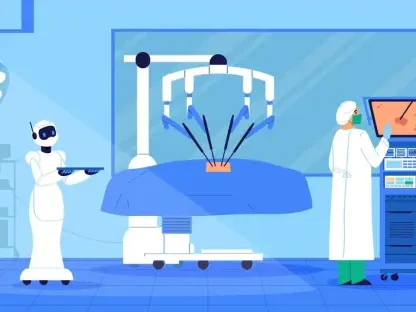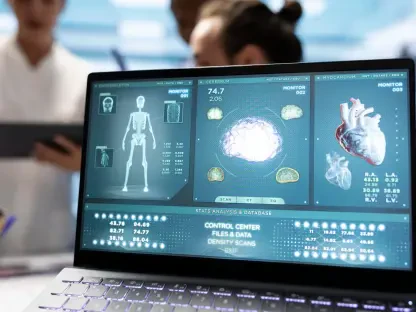Understanding the impact of clinical and operational factors on patient experiences during emergency department (ED) visits is vital for improving healthcare outcomes. A comprehensive study conducted by researchers from the Regenstrief Institute and the Indiana University School of Medicine sheds light on how these factors directly affect patient satisfaction. The findings of this extensive study highlight significant elements that influence patient perceptions and provide a roadmap for potential improvements in ED care practices.
The Role of Pain Management
The study highlights a significant correlation between the level of pain experienced by patients upon arrival at the ED and their overall reported experience. Patients arriving with higher pain levels consistently rated their experiences more negatively. This trend persisted irrespective of how promptly or successfully the pain was treated, indicating that initial pain levels profoundly influence patient perceptions.
Effectively addressing pain management or adjusting intake processes to better handle patient pain from the outset may significantly enhance satisfaction. Pain treatment protocols must be tailored to rapidly assess and alleviate pain to improve initial patient conditions. The findings suggest that by refining pain assessment and management approaches, EDs can make substantial strides in improving overall patient experiences.
Implications of Hallway Beds
Operationally, many EDs use hallway beds to manage high patient volumes and expedite care. However, the study found that placement in hallway beds was consistently linked to negative patient experiences. Patients assigned to these beds generally reported decreased satisfaction, citing concerns such as a lack of privacy and comfort. This operational necessity, driven by the need to handle overcrowding, was identified as a notable area needing improvement.
Developing strategies to minimize the use of hallway beds or enhancing the conditions and communication related to their use could lead to better patient satisfaction. Physical adjustments to increase privacy and comfort, alongside improved communication from healthcare providers, could significantly mitigate the negative perceptions associated with hallway bed placements. Enhancing these aspects would directly address a key operational challenge within EDs.
The Positive Effect of Radiology Studies
Interestingly, the study revealed that the administration of radiology studies, including X-rays, ultrasounds, CT scans, and MRIs, was associated with higher patient satisfaction. Patients who underwent these diagnostic tests often reported higher levels of satisfaction, likely due to the perception of thorough and attentive care. The detailed nature of these diagnostics appears to provide patients with reassurance about the thoroughness of their medical evaluation.
This finding emphasizes the importance of thorough diagnostic evaluations and clear communication regarding the purpose and findings of these tests, which can significantly enhance the overall patient experience in the ED. Healthcare providers should ensure that patients are well-informed about the diagnostic process and its necessity, thus contributing to a more positive perception of care.
Interpersonal Elements and Patient-Centered Care
The study indicates that experiences such as hallway bed placements and additional radiology orders often serve as proxies for broader interpersonal factors influencing patient satisfaction. Patients in hallway beds may feel that their care is rushed, leading to lower satisfaction scores, whereas those receiving detailed diagnostics like radiology studies might perceive their care as more attentive and comprehensive.
These findings underscore the vital role of effective patient-provider communication and the necessity for patient-centered care. Ensuring comprehensive histories are taken and that diagnostic measures are thoroughly explained can enhance patient satisfaction. Prioritizing clear, empathetic communication and personalized attention in the clinical environment can profoundly influence patient experiences in the ED.
Addressing Operational Challenges
Emergency departments are inherently high-pressure environments where operational efficiency is paramount. Managing patient surges and the use of hallway beds to handle crowding are significant challenges that directly impact patient experiences. The study’s findings highlight the importance of addressing these operational issues to improve patient satisfaction.
Implementing strategies that enhance operational efficiency without compromising patient comfort is essential. Exploring innovative solutions and process improvements to better manage overcrowding and expedite care can help mitigate the pressures faced by EDs. Ensuring that operational protocols align with patient-centered care principles will be key to navigating these challenges effectively.
Patient Perspectives in Future Research
A critical takeaway from the study is the need for involving patients as collaborators in future research to address the identified issues effectively. Recognizing the diversity in patient needs and preferences is essential for tailoring solutions that improve satisfaction. For example, some patients may accept longer wait times for a private room, while others might prioritize immediate attention, highlighting the need for flexible and accommodating care strategies.
Collaborations between healthcare providers and patients can yield actionable insights that address both perspectives. Engaging clinicians who share the goal of improving patient experiences, despite their distinct viewpoints, will facilitate substantial advancements. These partnerships aim to drive improvements even within the constraints of existing resources, emphasizing the importance of patient-centered approaches.
Concluding Remarks
Understanding the impact of clinical and operational factors on patient experiences during emergency department (ED) visits is crucial for enhancing healthcare outcomes. A comprehensive study by researchers from the Regenstrief Institute and the Indiana University School of Medicine provides valuable insights into how these elements directly influence patient satisfaction. This extensive research reveals important factors affecting patient perception and offers a roadmap for potential improvements in ED care practices. Key findings underscore the significance of both clinical efficiency and operational processes in shaping patient experiences, highlighting areas where targeted interventions can lead to better satisfaction and overall healthcare quality. Enhanced patient satisfaction in the ED not only improves immediate outcomes but also fosters trust and confidence in the broader healthcare system, ultimately promoting better long-term health and patient loyalty. These insights can guide healthcare providers in refining their practices to ensure high-quality, patient-centric care in emergency settings.









